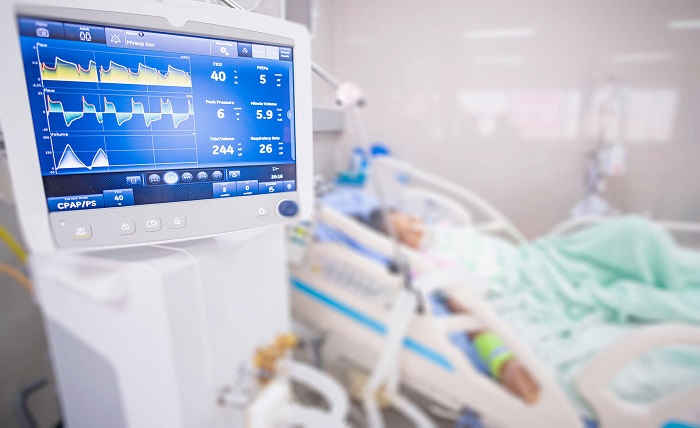This blog post highlights the importance of selecting the right hospital equipment for patient care. It covers key factors in decision-making, explores the latest technological advancements, and addresses challenges faced by healthcare professionals. With best practices and real-world case studies, it serves as a valuable guide for healthcare professionals, administrators, and medical equipment suppliers.
Factors to Consider When Choosing Hospital Equipment
Reliability and Quality
When it comes to hospital equipment, reliability and quality are non-negotiable. Equipment must perform consistently under pressure, as lives depend on it. Ensuring quality often starts with choosing reputable manufacturers known for their rigorous testing standards and certifications. Having equipment that functions correctly over time not only improves patient outcomes but also builds trust among healthcare professionals.
Another aspect of quality is durability. Hospital equipment undergoes significant wear and tear, so it must be robust enough to withstand frequent use. This means investing in materials that are resistant to corrosion and wear, ensuring that equipment lasts for years to come without frequent replacements.
Finally, quality assurance doesn’t end with purchase. Ongoing maintenance checks and adherence to service schedules are essential. Regular inspections help catch potential issues before they become critical, ensuring equipment continues to perform at its best.
Patient Safety and Comfort
Patient safety is at the forefront of healthcare, and equipment plays a pivotal role in this regard. It’s essential to select equipment designed with safety features that minimize risks to patients. This includes devices with alarms to alert staff of irregularities and systems with built-in redundancies to prevent failures.
Comfort is also crucial, as it directly impacts patient recovery and satisfaction. Equipment such as beds, chairs, and monitoring devices should prioritize ergonomic design to enhance patient comfort. Features like adjustable settings and soft padding can make a significant difference in the patient’s experience.
Additionally, incorporating technology that allows for minimally invasive procedures can further boost patient comfort. Equipment that reduces recovery time and causes less pain is highly valued in modern healthcare settings.
Cost and Budgeting
Healthcare facilities often operate within tight budgets, making cost considerations a significant factor when choosing equipment. It’s vital to balance quality with affordability, as cutting corners can lead to higher expenses down the line. A thorough cost-benefit analysis can help identify equipment that offers the best return on investment.
Leasing options or financing plans can provide flexibility, allowing facilities to acquire top-tier equipment without straining their finances. Engaging with suppliers who offer competitive pricing and bundled deals can also result in significant savings.
Finally, consider the total cost of ownership, which includes not only the purchase price but also maintenance, training, and operating expenses. A lower upfront cost may not always translate to long-term savings if associated costs are higher.
Compatibility and Integration with Existing Systems
The modern hospital operates as a complex network of interconnected systems. When introducing new equipment, compatibility with existing systems is crucial. Seamless integration ensures that equipment can communicate effectively with other devices and software, promoting efficient workflows.
This integration is particularly important in areas like electronic medical records (EMR) and hospital information systems (HIS). Equipment that can share data easily with these systems allows for real-time monitoring and better decision-making.
Furthermore, choose equipment with open architecture or standardized interfaces to avoid compatibility issues. This also allows for easier upgrades and scalability, ensuring future technological advancements can be incorporated without extensive overhauls.
Support and Maintenance Services
Reliable support and maintenance services are vital for ensuring equipment longevity and performance. When selecting suppliers, assess their after-sales service offerings, including training, technical support, and maintenance contracts. A supplier with a strong service reputation can be a valuable partner.
Timely service response is crucial, as equipment downtime can disrupt patient care. Consider suppliers who offer rapid response times and have local service centers to minimize delays.
Lastly, ensure that the equipment comes with comprehensive documentation and user manuals. These resources support staff training and troubleshooting, making it easier for healthcare professionals to use equipment confidently and effectively.
Latest Technological Advancements in Hospital Equipment
Overview of Cutting-Edge Technologies
The landscape of hospital equipment is rapidly evolving, with new technologies constantly emerging. Advanced imaging systems, AI-driven diagnostics, and robotic surgery equipment are just a few examples that are revolutionizing patient care. These technologies offer unparalleled precision and efficiency, leading to better outcomes.
One major advancement is the use of AI and machine learning in diagnostic tools. These systems analyze vast amounts of data to assist clinicians in making accurate diagnoses faster than traditional methods. AI’s ability to learn from each case also improves its accuracy over time, making it an invaluable asset in healthcare.
Robotic surgery is another cutting-edge technology gaining traction. These systems provide surgeons with enhanced precision through minimally invasive techniques, reducing patient recovery time and improving surgical outcomes. The ability to perform complex procedures with smaller incisions is transforming how surgeries are conducted.
Examples of Innovative Equipment and Their Benefits
An excellent example of innovative equipment is the portable ultrasound machine. These devices bring high-quality imaging to the bedside, allowing for quicker diagnosis and treatment without the need for patient transport. This mobility is particularly beneficial in emergency and critical care settings, where time is of the essence.
Another innovation is smart infusion pumps, which use wireless technology to connect with hospital systems. They allow for precise medication delivery and real-time monitoring, reducing the risk of dosage errors. These pumps are instrumental in improving patient safety and treatment accuracy.
Telemedicine carts equipped with high-definition cameras and screens are also transforming healthcare delivery. They enable remote consultations and bring specialist care to patients in underserved areas, breaking down geographical barriers to healthcare access.
Challenges in the Selection Process
Regulatory Compliance
Navigating the complex landscape of regulatory compliance is one of the biggest challenges when selecting hospital equipment. Health authorities in different regions have stringent requirements that equipment must meet before it can be used in healthcare settings. Ensuring compliance with these regulations is essential to avoid legal issues and ensure patient safety.
Working closely with suppliers who understand these regulations can ease the compliance process. Suppliers should provide all necessary documentation and certifications to demonstrate that their equipment meets regulatory standards.
Ongoing monitoring is also crucial to ensure continued compliance as regulations evolve. Staying informed about changes in industry standards can help healthcare facilities adapt quickly, avoiding potential fines or disruptions.
Staff Training and Adoption
Introducing new equipment requires comprehensive staff training to ensure its effective use. Healthcare professionals must be familiar with the equipment’s features and operation protocols to maximize its potential benefits. This training is crucial for maintaining patient safety and ensuring smooth workflows.
However, resistance to change can be a barrier to adoption. To overcome this, involve staff in the selection process and provide hands-on training sessions. Demonstrating the equipment’s benefits and relevance to their daily tasks can foster enthusiasm and acceptance.
Continuous education and support are also necessary to maintain proficiency. Regular refresher courses and access to instructional materials can help staff stay updated on best practices and any new features introduced through software updates.
Capital Investment and Return on Investment (ROI)
Investing in hospital equipment involves significant financial commitments, making it essential to evaluate the potential return on investment (ROI). High-quality equipment and technological advancements often come with higher price tags, so assessing their long-term benefits is crucial.
Calculate the potential savings from improved efficiency, reduced errors, and enhanced patient outcomes. These factors can contribute to substantial cost savings and revenue generation, justifying the initial investment.
Additionally, explore different financing options to ease the burden of capital investment. Leasing arrangements or vendor financing can provide flexibility in managing costs while still accessing cutting-edge equipment.
Best Practices for Selecting and Implementing Hospital Equipment
Collaboration between Healthcare Professionals and Suppliers
A collaborative approach between healthcare professionals and equipment suppliers is key to successful equipment selection and implementation. Healthcare professionals bring firsthand knowledge of clinical needs, while suppliers offer insights into the latest technologies and features.
Engage stakeholders from various departments, including clinicians, nurses, and IT staff, to gather diverse perspectives. This collaborative effort ensures that the chosen equipment aligns with the facility’s clinical objectives and operational requirements.
Establishing strong relationships with suppliers can also facilitate smoother procurement processes and better support for ongoing maintenance and upgrades. Open communication and trust are essential for successful collaborations.
Importance of Thorough Research and Testing
Before making purchasing decisions, conduct thorough research and testing to evaluate different equipment options. Compare features, performance, and compatibility with existing systems to ensure a seamless fit.
Request demonstrations and trial periods to test the equipment’s functionality and user-friendliness. Hands-on experience allows healthcare professionals to assess how the equipment integrates into their daily workflows and whether it meets their specific needs.
Seek feedback from other facilities that have used the rental medical equipment to gain insights into its real-world performance and reliability. Learning from their experiences can guide decision-making and minimize potential pitfalls.
Planning for Future Upgrades and Scalability
When selecting hospital equipment, consider its long-term scalability and potential for upgrades. Healthcare needs and technology are constantly evolving, so equipment should have the flexibility to accommodate future advancements.
Choose equipment with modular designs or software-based upgrades that allow for easy enhancements without costly replacements. This adaptability ensures that the facility remains at the forefront of medical technology and can continue providing high-quality care.
Collaborate with suppliers to establish upgrade plans and timelines, ensuring that equipment remains aligned with the facility’s growth and changing needs. Proactive planning for scalability maximizes the ROI and extends the equipment’s lifecycle.
Conclusion
Now that we have explored the importance of selecting and implementing hospital equipment, as well as best practices and real-world examples, it is clear that this process requires careful consideration and collaboration. Choosing the right equipment can improve patient outcomes, increase operational efficiency, and provide a positive return on investment.






